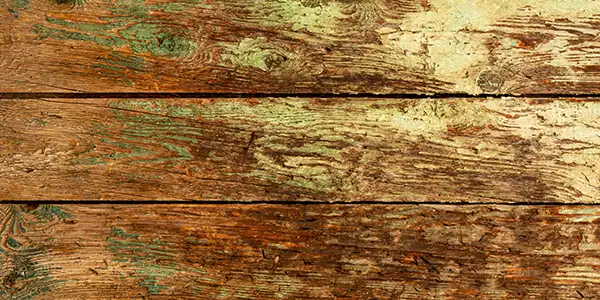Wood is a timeless, versatile, and beautiful material used in homes, decks, furniture, and more. However, it has a major vulnerability: wood rot. Left unchecked, wood rot can severely damage structures, leading to costly repairs and safety risks. Understanding its causes, identifying early signs, and knowing the best solutions will help protect your investment and keep your wood looking its best for years to come.
What Causes Wood Rot?
The main culprit behind wood rot is excess moisture. When wood stays damp, it becomes a breeding ground for fungi that break down its fibers. Common causes include:
- Rain and water exposure: Constant contact with rainwater or standing water around your home or garden structures.
- Plumbing leaks: Hidden leaks inside walls or beneath floors can create moist conditions ideal for rot.
- High humidity: Poorly ventilated areas such as basements and crawl spaces trap moisture in the air.
- Contact with soil: Wood that touches the ground absorbs water continuously, accelerating decay.
- Lack of protective finish: Missing or worn-out paint or sealant allows water to penetrate more easily.

Wet Rot vs. Dry Rot
There are two main types of rot to be aware of:
- Wet rot is more common and stays confined to consistently damp areas. It causes the wood to soften, darken, and smell musty. Although it spreads slowly, it still significantly weakens the wood.
- Dry rot is more dangerous and aggressive. It starts in damp areas but can spread to dry wood, causing severe cracking, shrinking, and crumbling.
Early Signs of Wood Rot
Spotting wood rot early is essential to prevent severe damage. Check regularly for:
- Discoloration: Dark patches or uneven color can indicate moisture issues.
- Soft or spongy texture: Pressing gently on wood surfaces may reveal softness or give way under pressure.
- Cracks and splits: Weak wood is more likely to develop surface cracks or deep splits.
- Musty odor: A persistent damp or moldy smell is a sign of hidden rot.
- Fungal growth: Mold or mushroom-like growths on or near wood surfaces suggest advanced decay.
Where to Inspect for Rot
Regularly inspect vulnerable areas, including:
- Window sills and frames
- Deck boards and support posts
- Basements and crawl spaces
- Roof edges and eaves
- Fences, gates, and garden structures
- Exterior stairs and railings
Solutions to Wood Rot
When wood rot is detected, quick action is crucial to prevent further spread and costly repairs. Effective solutions include:
- Remove and replace damaged wood: Severely rotted sections should be cut out and replaced with new, treated wood to restore strength and safety.
- Apply wood hardeners: For minor rot, wood hardeners can reinforce weakened areas by penetrating and solidifying the fibers.
- Use wood fillers: After applying hardeners, fillers can rebuild the surface, making it smooth and ready for painting or sealing.
- Improve ventilation and drainage: Increase airflow and correct drainage issues around wood structures to minimize future moisture buildup.
- Seal and protect: Applying a high-quality protective coating like Logic Wood helps repel water and oil, preventing moisture from entering and keeping it strong and dry.
Combining these solutions helps stop existing rot, strengthens your wood, and prevents future problems, protecting your home and outdoor areas for the long term.
Final Thoughts
Understanding the causes of wood rot and knowing how to fix and prevent it can save you from unexpected repairs and extend the life of your wooden surfaces. Regular inspections, prompt repairs, and using protective treatments are key to maintaining healthy, beautiful wood for years to come.
Ready to protect your wood and restore your surfaces? Contact us today for expert advice or explore our Logic professional services to get started. For long-term protection, don’t forget to check out Logic Wood.